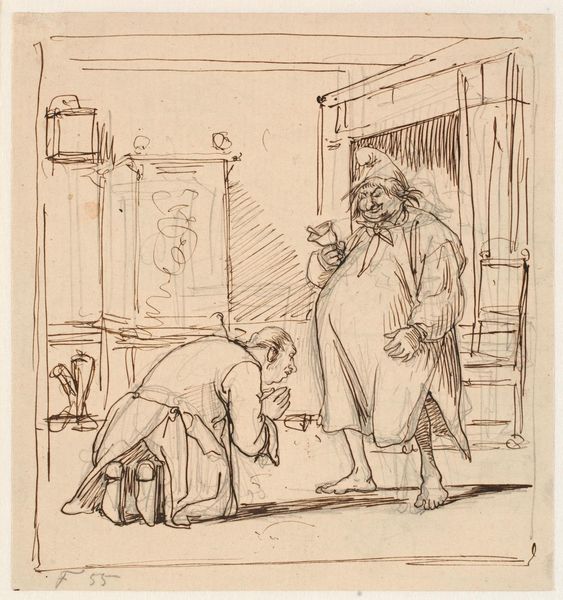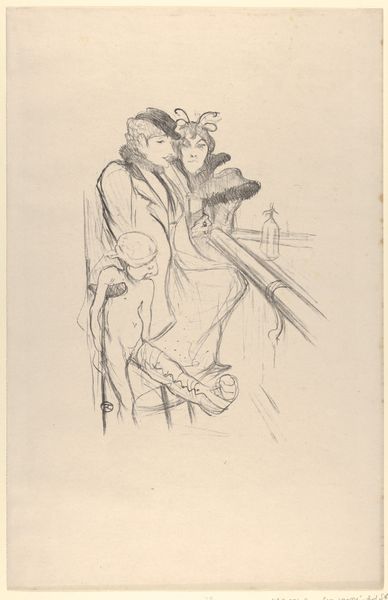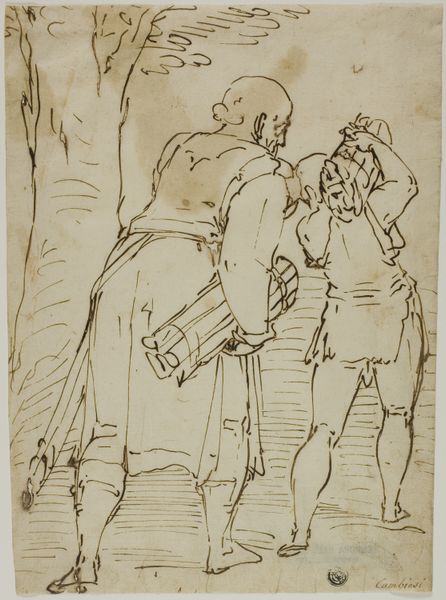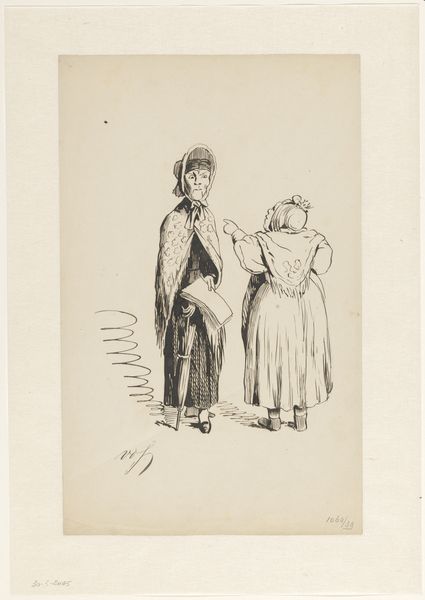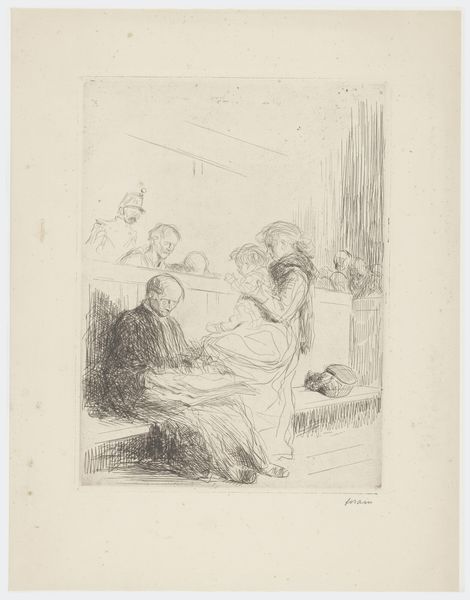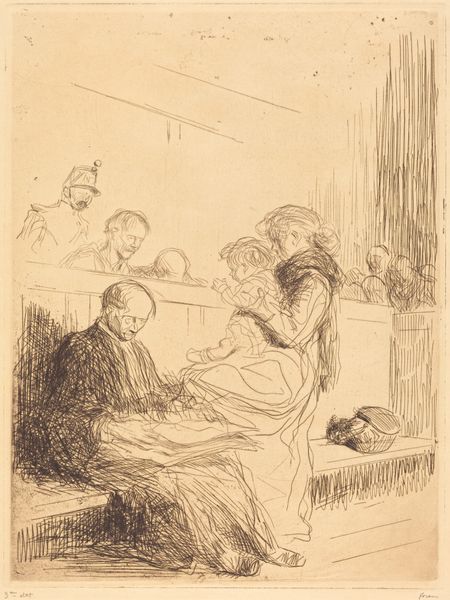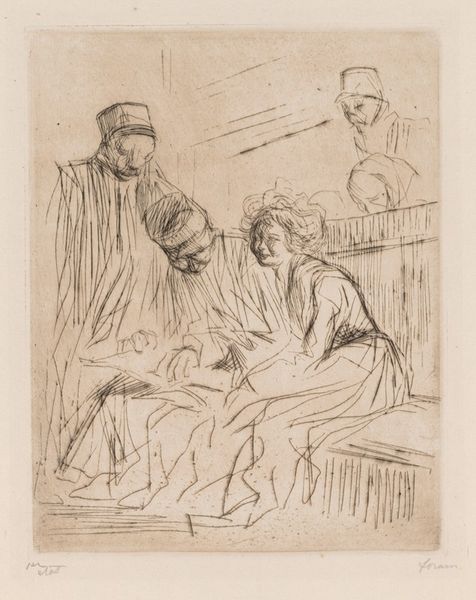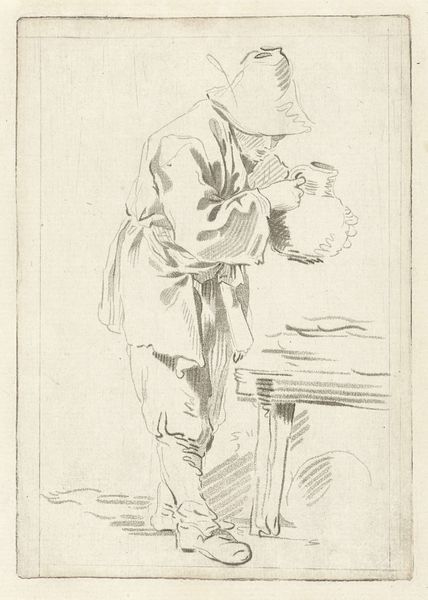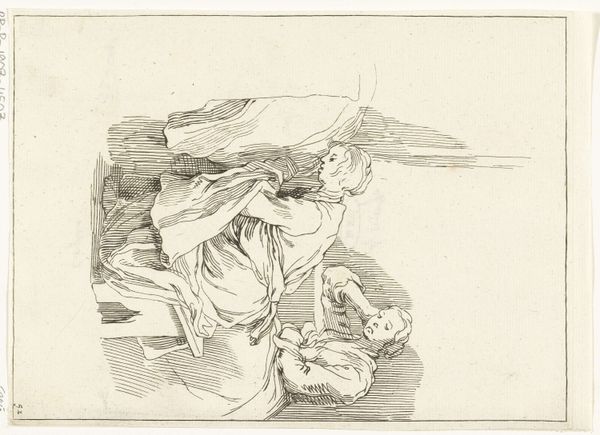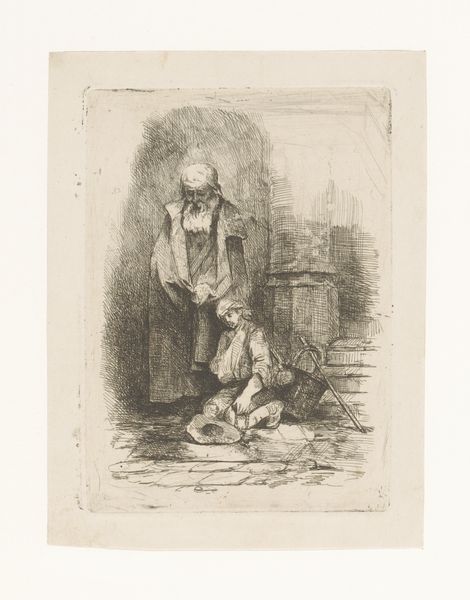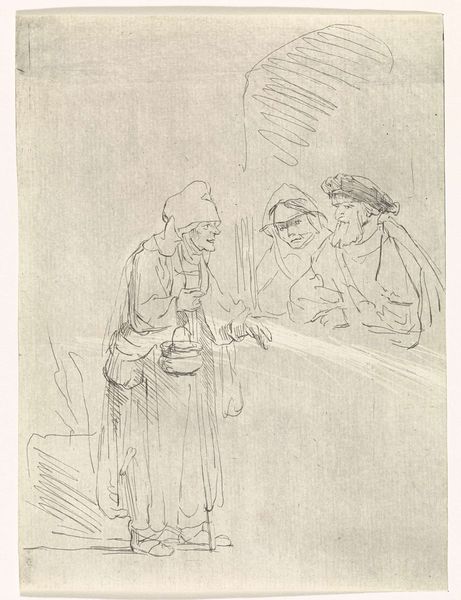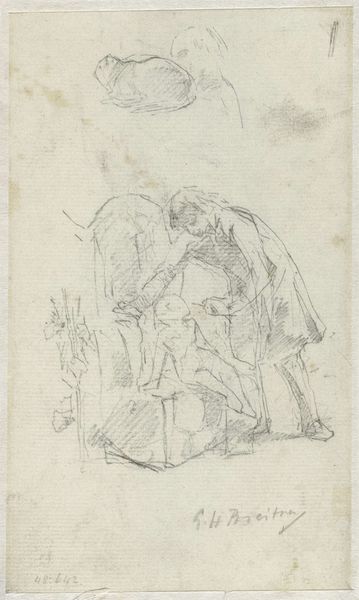
drawing, print, engraving
#
drawing
#
medieval
# print
#
figuration
#
line
#
history-painting
#
engraving
Dimensions: 128 mm (height) x 140 mm (width) (bladmaal)
Curator: This print, attributed to Lorenz Frølich, created sometime between 1820 and 1857, is titled "Prøveblad. Tre siddende apostle," which translates to "Proof Sheet. Three Seated Apostles." Editor: It strikes me as profoundly melancholic. The linear style gives it an almost architectural austerity, but the poses of the figures communicate deep sorrow or weariness. The bare feet are particularly striking; vulnerability made visible. Curator: Indeed. Frølich's artistic interests largely involved historical paintings, including biblical and mythological scenes. His artistic style, leaning towards linearity, references medieval tapestries and manuscript illuminations. This aesthetic choice serves to give the work a sense of historical grounding, situating it within a broader tradition of religious representation. Editor: I wonder about the specific moment Frølich sought to capture. Is this immediately after the Crucifixion? The downcast gaze of the central figure, and the support offered by another apostle, certainly speaks to trauma. I'm drawn to the shadows. They amplify the gravity of the moment. Curator: His strategic use of light and shadow serves to heighten the emotional intensity, contributing to the overall somber mood of the work. Moreover, prints were quite important for artists. These would circulate images to wider audiences, which also assisted Frølich in building his reputation as an artist who worked in line with more established printmakers of the time. Editor: Thinking about these figures circulated in print complicates it for me. Were these images aimed at offering comfort or perhaps intended to remind audiences of their religious duties and suffering of Christ? Does art’s role as both a consoler and a potential tool for social control need further analysis within religious contexts? Curator: Certainly a valid question! These sorts of works, regardless of intent, can take on new meaning through social reception. By drawing parallels between biblical narratives and contemporary realities, we can reveal both intended messages, as well as contemporary critiques of such visual strategies. Editor: It really underscores how even seemingly straightforward religious depictions can hold a complex tension between faith, social control, and perhaps even a glimmer of resistance or questioning. Curator: Exactly! By investigating its multifaceted contexts, we discover the continued relevance and meaning within such pieces as this Frølich print.
Comments
No comments
Be the first to comment and join the conversation on the ultimate creative platform.
